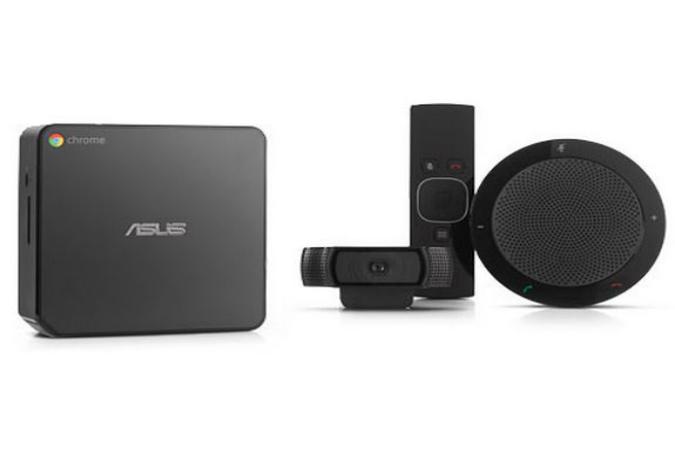
Just the other day, Asus announced its Chromebox, a set top box-like small form factor computer running Chrome OS sporting a wallet-friendly entry level price of $179. Hooray for cheapskates!
There’s more though. Today, Google revealed another take on the Asus Chromebox. It’s called Chromebox for meetings, and it’s geared towards businesses that rely on long distance video conferencing to connect teams, clients and co-workers together from afar.
Priced at $999, Chromebox for meetings runs Google’s Chrome OS and aims to simplify videoconferencing by ditching passcodes, pins and other familiar standbys for those familiar with current video/phone-based conferencing setups. Setting up a video conference with Chromebox for meetings is allegedly done so with the push of a single button using an included remote. Specs include an Intel Core i7 processor, HDMI and DisplayPort, four USB 3.0 ports, and Ethernet along with dual band 802.11 a/b/g/n Wi-Fi.
MORE: Why 2014 May Be a Great Year for Google Chrome OS
Up to 15 people can participate in a video conference at once, and only one person needs to be running a Chromebox for meetings rig in order to get a meeting up and running. Other participants can call in using mobile devices, laptops or desktops. Those using more traditional video conferencing setups won’t be left out in the cold. They can call into these meetings using a tool from Vidyo, which is compatible with Google+ Hangouts. Those who prefer to participate in the conference with their phones can do so with the use of UberConference, which is also Hangouts-friendly.
Chromebox for meetings will ship with a 1080p webcam, a microphone and a remote with a full QWERTY keyboard on the back. Though Chromebox for meetings ships with a free year of management and support, once the year is up, you’ll need to fork over $250 a year to continue receiving these services.
Chromebox for meetings is available now, and Google says that more Chromebox devices will be arriving from Dell and HP “in the coming months.”
So what do you think? Would you drop $999 and $250 a year to adopt this videoconferencing box for your business? Why or why not? Sound off in the comments below.


